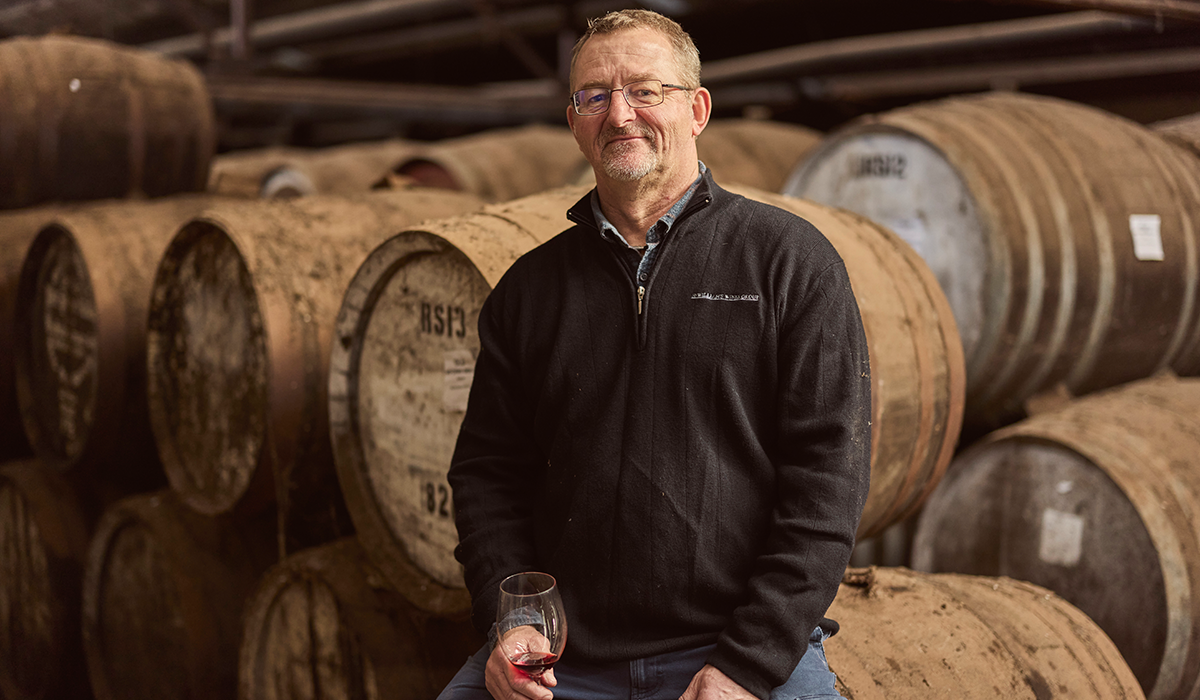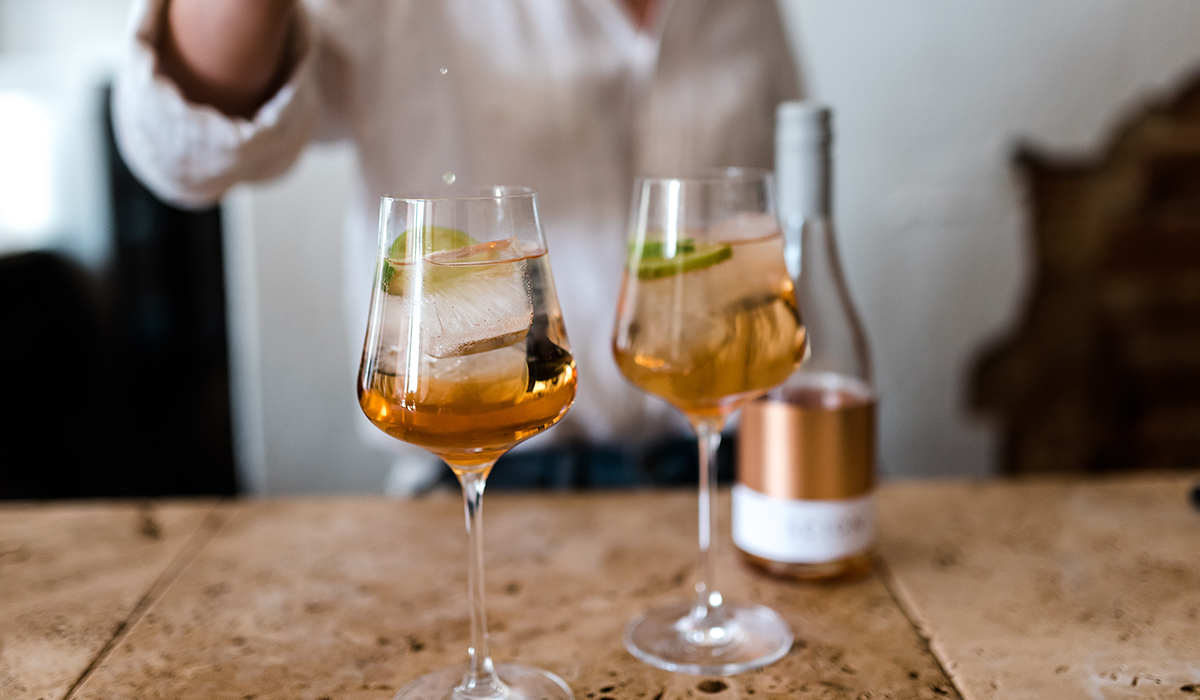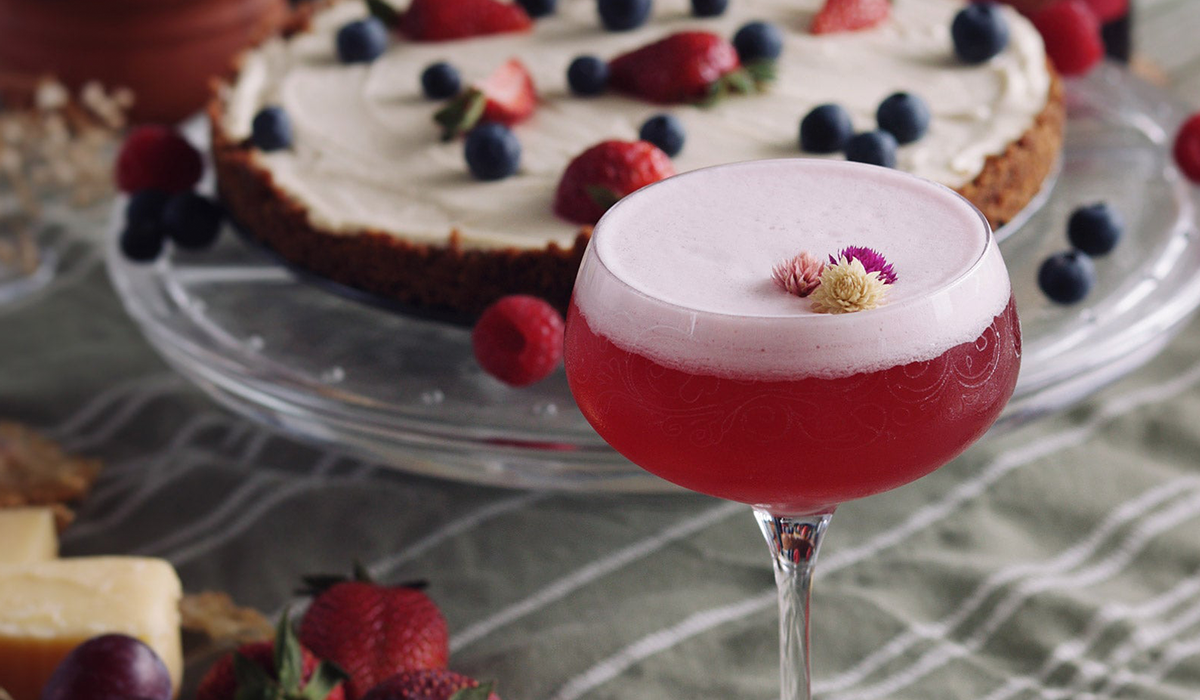New York in August 2017. It was an impossibly hot and humid day for strolling around the Big Apple. The only right decision that I made that day was stopping by a wine bar for an old madeira – the fortified wine of the eponymous Portuguese island. Although I don’t remember the where, I certainly remember how great it was.
Fortified wines are not only delicious, they're extremely versatile. So, why do we only drink them in the cooler months?
Sharon Romeo, at FINO at Seppeltsfield in the Barossa Valley, is a fortified tragic. “As an independent business operating in a historic wine estate dating back to 1851, I wanted to tell Seppeltsfield's fortified story”, she says. “This was going to be a challenge, as dry fortified wines are an acquired taste."

Sharon has converted guests to the Seppeltsfield DP117 apera (fino style), DP116 (amontillado style) and DP233 (a blend of fino and amontillado styles), served neat, in original cocktails or by tweaking classics like the negroni, Moscow mule and espresso martini.
“Our approach is all about the unadulterated” says Bridget Raffal, co-owner of the award-winning wine bar Where’s Nick in Sydney's Marrickville. Bridget loves to match the Pennyweight Constance apera from Beechworth with farinata (a thin, unleavened crêpe made from chickpea flour) or clams with broad beans and lardo.
“The Pfeiffer Seriously Nutty sits in the amontillado/palo cortado spectrum and is super food friendly – think jamón serrano, beef carpaccio with golden garlic and parmesan or artichoke and chestnut salad.”

Talking with local producers Stephen and Elisabeth Morris at Beechworth's Pennyweight, they say their Pennyweight Gold, made in the style of a white fortified, is highly sought after for its versatility. “It's popular both neat and as a mixed drink with either tonic or soda water, crushed ice and a slice of lime or lemon,” Elisabeth says.
In the same fashion, McWilliam's has developed a white tawny that is all about savouriness, showing a considerably inferior amount of residual sugar compared to a sweet or cream apera.
Russell Cody, senior winemaker at Calabria Family Wine Group, likes to combine fortified in cocktails. His favourite is a twist on one of the classics from Mexico, Paloma. “This uses tequila, but white tawny can take its place perfectly and cuts the proof considerably.”

Rowly Milhinch of Scion in Rutherglen has interesting insights regarding the versatility of fortifieds. Elevated alcohols balance the intense sweetness, while the unique range of colours of fortifieds can capture the drinker’s eye like no other. For Rowly, seasonality goes hand in hand with fortifieds. He says there are mixers for all seasons.
But what about those consumers who have an affection for the traditionality of Australian fortified wines?
“We often get into silly arguments about ruining fortifieds by mixing them,” he says. “This is the best bit – some fortified wines are that good, they appeal to traditional and experimental palates alike.
"You'd be amazed how they can translate the intention of the base fortified but elevate it to accommodate different social and environmental settings. Often the Achilles heel, but not anymore!”
Venetta Pinn, marketing and cellar door manager at Chambers Rosewood in Rutherglen, agrees. “For such a long time it was considered taboo to serve fortifieds in any other way than after dinner at room temperature,” she says. “After hosting a cocktail evening with an extensive list of fortified mixers, the positive response was overwhelming irrespective of age or gender.”

Fortified cocktails to try at home
Negroni 233
30ml Campari30ml Seppeltsfield Dry Apera DP233
30ml gin
Large ice cube
Orange peel
Method:
In a stirring glass over ice, add Campari, gin and apera. Stir and strain in a heavy-based glass with a large ice cube. Garnish with orange peel.
Recipe courtesy of FINO at Seppeltsfield
Muscat Gin Sour
30ml Scion Muscat Gin15ml Classic Rutherglen Muscat
30ml simple syrup
30ml fresh lemon juice
30ml egg white or aquafaba
Method:
Add all ingredients (except the ice) to cocktail shaker and dry shake. Add ice and shake, before double straining into a sour glass. Tip: 'Dry shaking' before adding ice allows the liquids to emulsify, which produces more aeration and a thicker foam on top of the finished cocktail.
Recipe courtesy of Scion and grace. bar + eatery
Morris Ruby Spritz
45ml Morris Signature Whisky22.5ml Morris Classic Ruby
30ml pineapple juice
22.5ml lemon juice
15ml simple syrup
Prosecco
Edible flowers or a lemon wheel for garnish
Method:
Place the whisky, ruby, pineapple juice, lemon juice, syrup, and ice into a shaker. Shake well and fine strain into a coupe glass. Top it up with Prosecco and garnish.
Recipe courtesy of Morris
Image credit: FINO, Wine Australia, Scion/Georgie James, and Morris.





